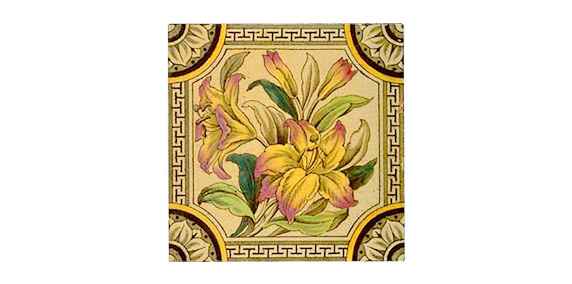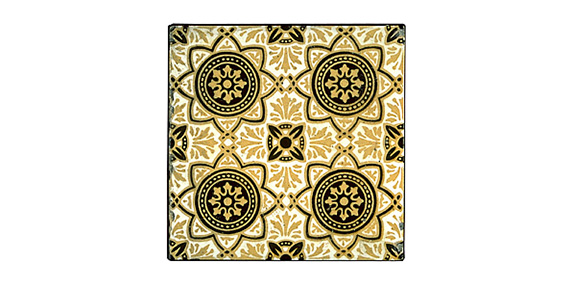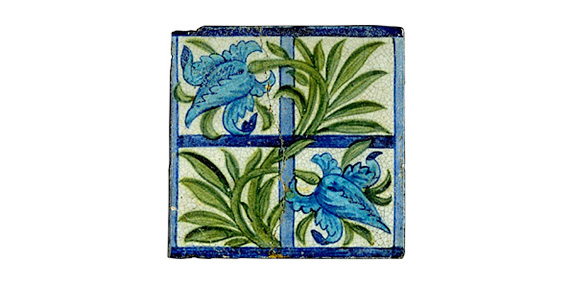English Tiles
In Victorian England, people who gained wealth from the Industrial Revolution started actively adopting a new culture in their lifestyles. Artistic and fresh-looking tiles became a must within the homes of the middle class, owing to increased interest in hygiene. With the construction boom around 1900 and mass production made possible through machinery, tiles of various styles were made by many tile manufacturers such as Minton and Wedgewood. Meanwhile, in response to the uniform industrial products emerged the Arts and Crafts Movement, reevaluating the traditional handicraft.
-

- Transfer Printed Tile with Floral Design
- 19th century
154 × 154 × 10 (mm)
Intricate design of the tiles was transfer-printed using copper plate, dramatically improving the production efficiency of the tiles.
-

- Encaustic Tile with Floral Design
- 19th century
Encaustic tiles were made by impressing patterns on wet clay base with a roller and filling the indentation with liquid clay, or slip, of different colors. Another method used was dry-pressing tiles using powdered clay.
-

- Hand Painted Tile with Floral Design by William De Morgan
- 19th century
155 × 155 × 10 (mm)
William De Morgan was one of the most famous designers of tiles who produced hand-painted masterpieces and pioneered the British Arts and Crafts Movement.